|
Listen to this article  |
Gearbox manufacturer SEAT Componentes needed to automate the unloading of 18,000 machined gears a day at its plant in Spain to guarantee the quality of the parts. The company integrated 10 collaborative robots from Universal Robots using only internal resources.
This formula made it possible for SEAT to keep know-how on cobot configuration in-house, eliminating extra programming and maintenance costs. The do-it-yourself installation was done without changing the existing factory layout, allowing new applications to be configured in less than 1 hour.
As a result, the company has reduced errors, improved worker safety, and now has a team prepared to take on new automation projects.
The business challenge
SEAT is a manufacturer of gearboxes for the Volkswagen Group plants in Europe, Asia, and America. It supplies them for a variety of cars made by both Volkswagen, Audi, SEAT S.A., and Skoda.
At its plant in Barcelona, Spain, SEAT manufactures gearboxes, ranging from the casting of the aluminum to the assembly of the housing, which contains gears, shafts, synchronizer, and the differential gearbox.
The company also performs the subsequent quality control. It is a very specialized and sophisticated process in which quality and precision are critical to guarantee correct operation and noise reduction of the gearbox.
Unloading the parts and making them available for the gearbox assembly process used to be carried out completely by hand with operators unloading and transporting the parts on trolleys. A process SEAT wanted to automate to reduce errors and improve safety.
“The aim is to ensure that from the machining process to assembly, the operator touches the part as little as possible,” explained Fonseca, senior manager of technical services at SEAT.
Cobots to the rescue
SEAT’s maintenance team based its automation approach on experience gained from an earlier project from 2015 in which it installed UR cobots at its shotblasting and washing stations. The company realized that cobots were easy to install, maintain, and integrate without needing safety measures such as fencing based on conducted risk assessments.
Since using cobots simplified and streamlined the shotblasting and washing process, the team recommended integrating cobots again to unload parts in the manufacture of gearboxes.
SEAT decided to integrate 10 UR10e collaborative robots to carry out the unloading. The company could undertake that task without the services of an external integrator thanks to its previous experience with the cobots. This guaranteed cost savings both at the time of installation and in future maintenance tasks.
Performing the integration of the UR cobots with SEAT’s resources involved two stages of training and preparation. First, the SEAT Componentes Maintenance team trained within the company, starting with the free UR Academy online training modules.
Second, the team carried out a pilot project in which it integrated an initial cobot.

Cobots offer small footprint and ease of use
During this pilot test, SEAT studied the costs and implementation periods of a collaborative robot, the safety requirements that the technology required, and the technical feasibility of the operation.
The cobots passed the test.
“We decided to use robots from Universal Robots due to their easy programming and integration in the line, and above all because of their low footprint,” said Francisco Pérez of the SEAT Componentes Maintenance Technical Office. “We were able to install them without changing the existing layouts, allowing the robots to work alongside the operator.
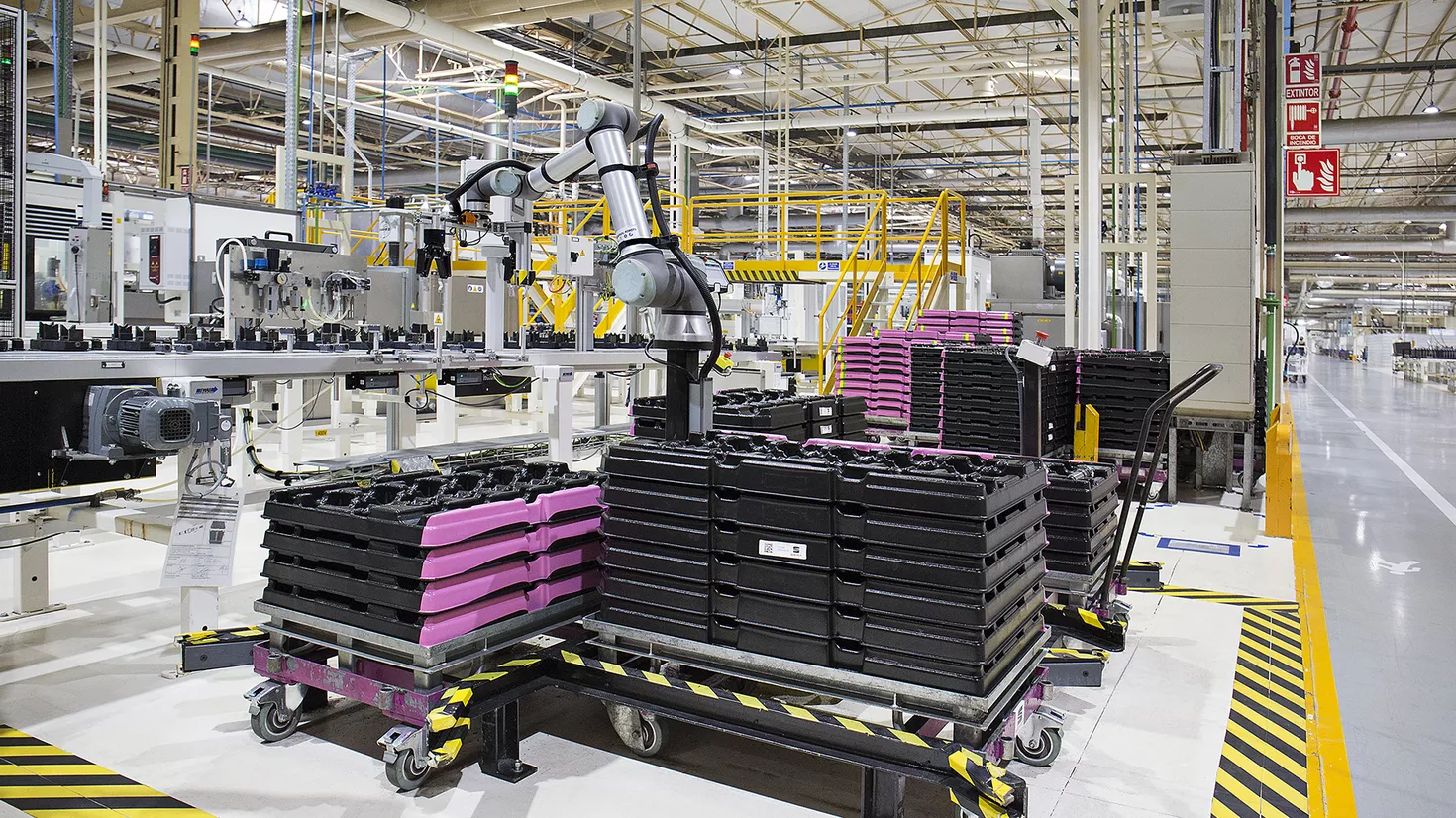
No fixed installations
The UR10e cobots currently serve 10 different machining lines. They are not fixed installations, but they can easily be adapted to model changes.
“In less than 10 minutes, we can adapt a cobot to transfer from unloading one part to a completely different component,” Francisco Pérez pointed out.
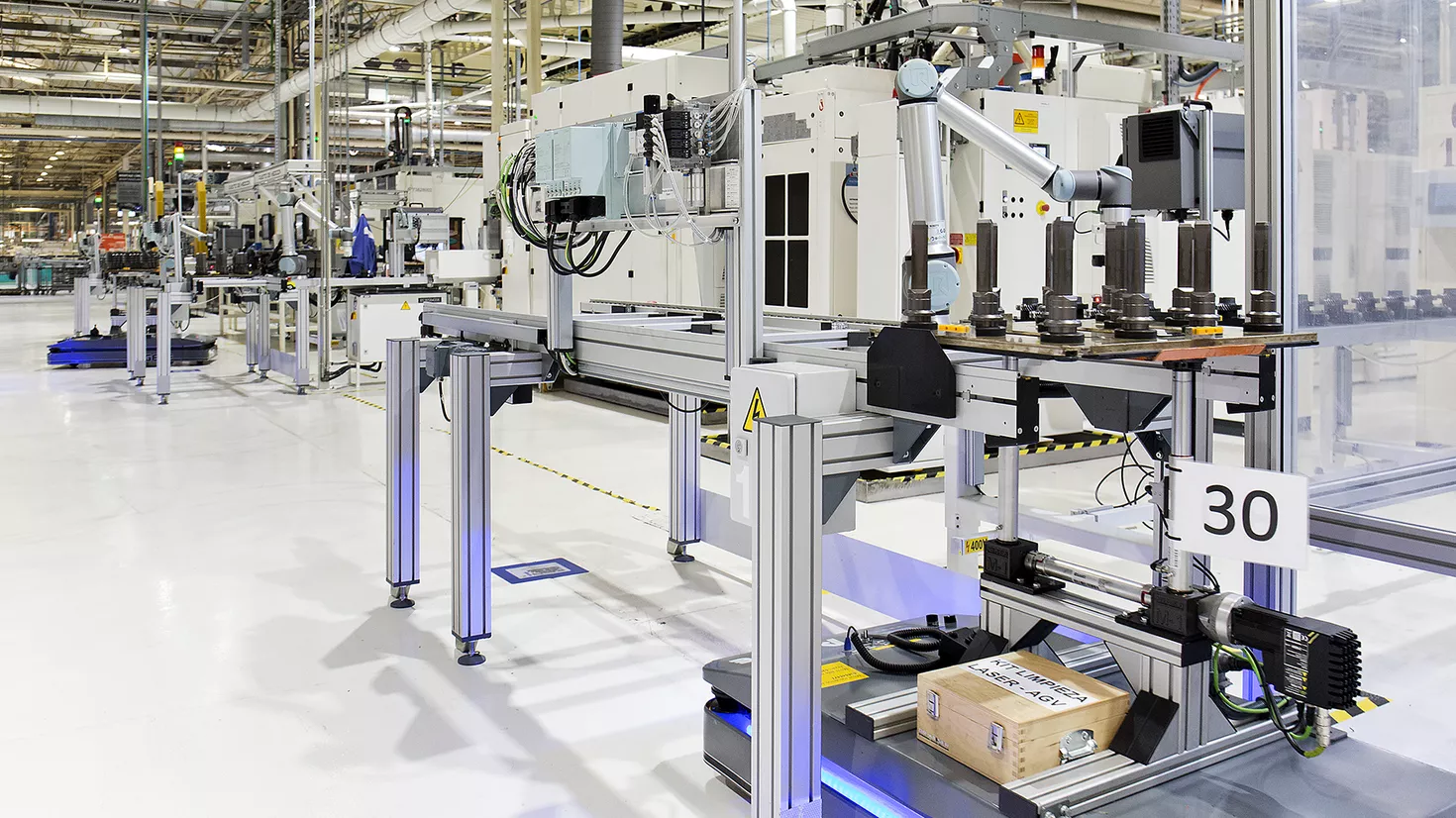
Increased machine uptime
Using the PROFINET protocol, the cobot communicates with the PLC and receives instructions as to when there are already machined pieces so that it can perform the related operation. When that is the case, the cobot unloads the parts onto trays.
Once the tray is full, the PLC communicates with the autonomous mobile robots (AMRs) to remove the full tray and insert a new one, thereby minimizing machine stoppages.

Just-in-time manufacturing eliminates surplus stock
The AMR transports the parts to a warehouse that is filled just in time according to manufacturing needs, avoiding surplus stock and the costs these entail. Having reached this point, everything is now ready for the gearbox assembly line: The gears are positioned on a special assembly tray, and through a series of automated operations, the remaining gearbox parts are attached.
Within this synchronized process, the cobot complies with SEAT’s cycle times to achieve the plant’s daily production goals.

Cobot No. 11 used for testing and validation
An additional eleventh UR10e has joined the cobot fleet at the SEAT plant. This robotic arm is intended for in-house training and is mounted on a mobile platform to get close to machines and work centers.
The UR10e allows operators to familiarize themselves with programming collaborative robots. Furthermore, it allows concept tests and validations of new installations to be performed before their integration into the line.
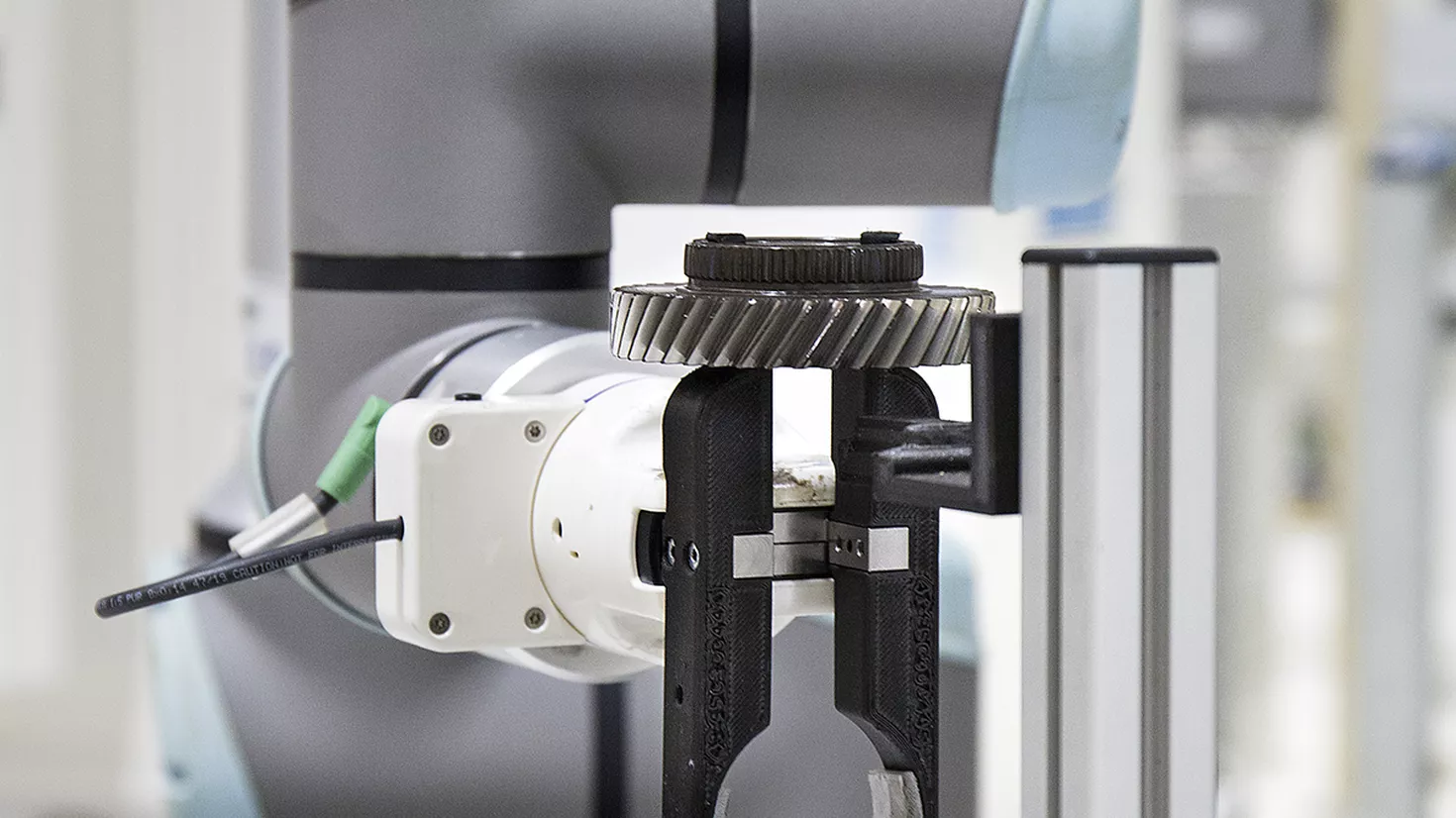
3D printing of gripper fingers
Another key factor in the integration of UR cobots by SEAT is that the plant is self-sufficient in printing the “fingers” of the collaborative grippers, according to each need and the level of protection required to maintain the safety level of the application.
This makes it possible to have almost immediate spares without the need for stock and to perform concept tests in less than 45 minutes, said the company.
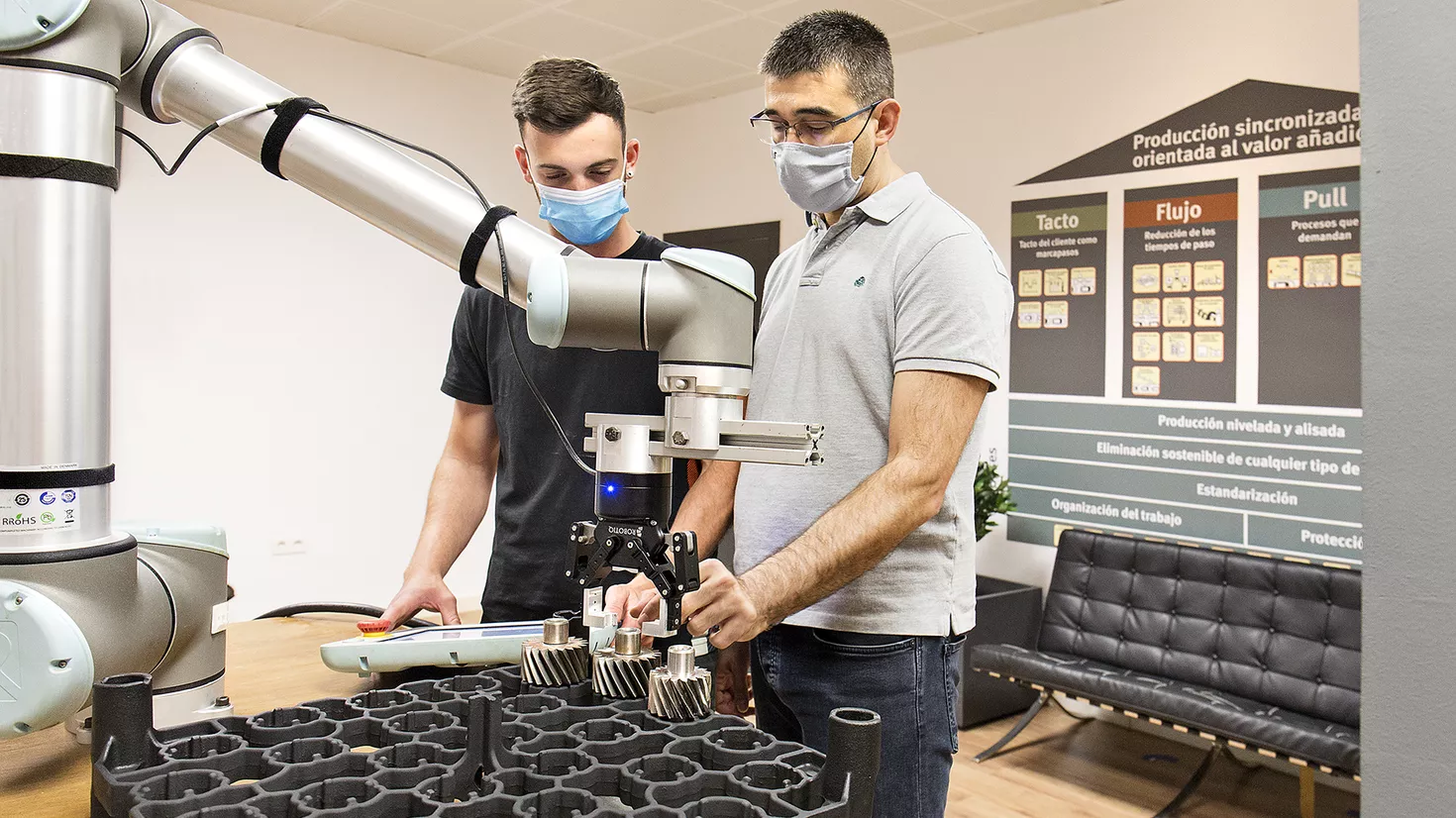
Knowledge of cobots kept in-house
“Performing integration in-house has allowed us to keep the know-how of programming and integrating the cobots within the maintenance area, which means that during any stoppages, we can be more decisive and the costs of machine downtime are lower,” said Manuel Gómez, maintenance manager at SEAT Components.
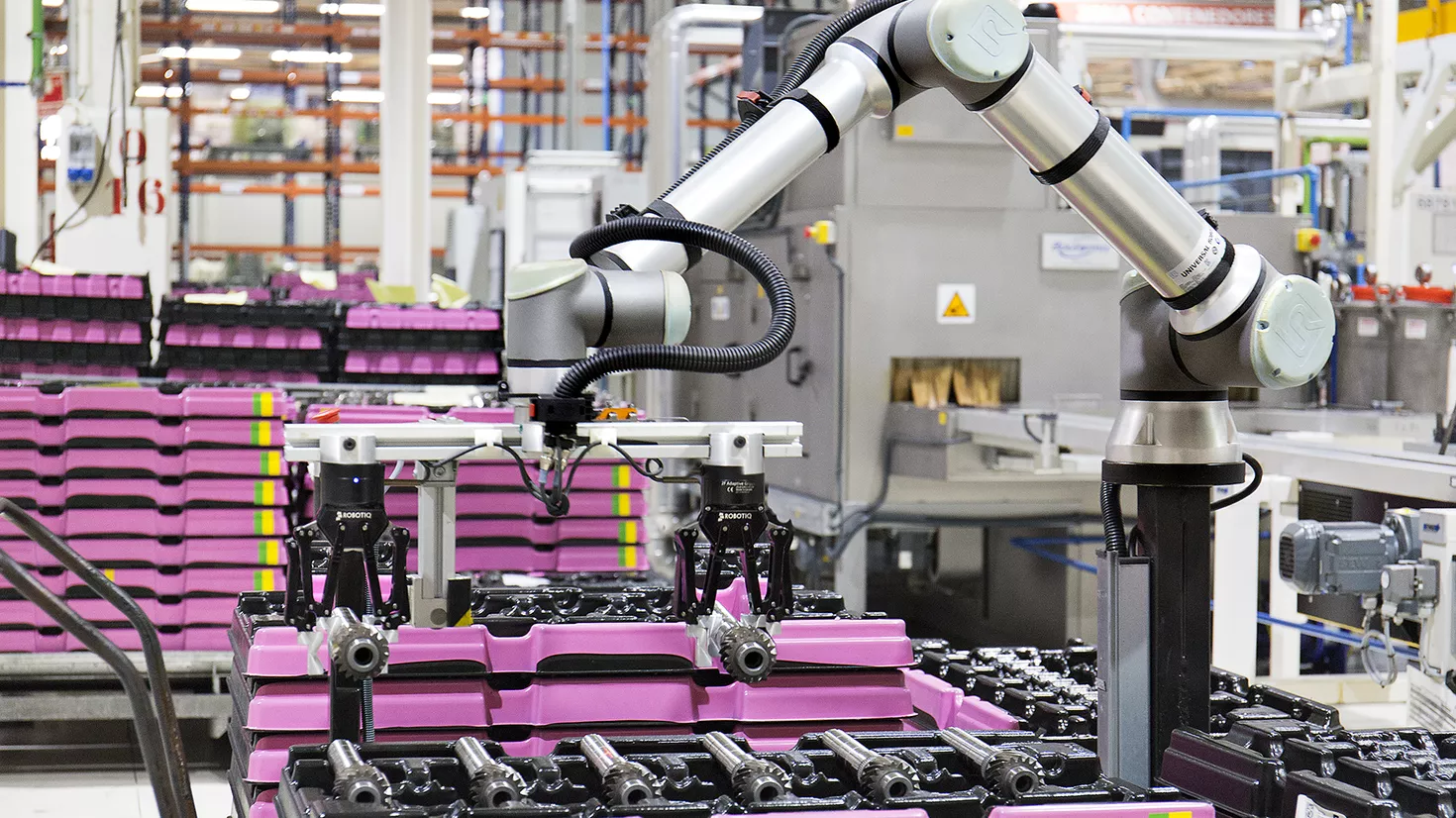
Intuitive gripper configuration
This ease when adapting to production was reinforced with the intuitive configuration of the cobots and their peripherals, certified through the UR+ platform.
“We have been able to implement applications in less than one hour,” Francisco Pérez emphasized. Moreover, SEAT Components can implement these changes without having to call upon the services of an integrator, which would increase costs.
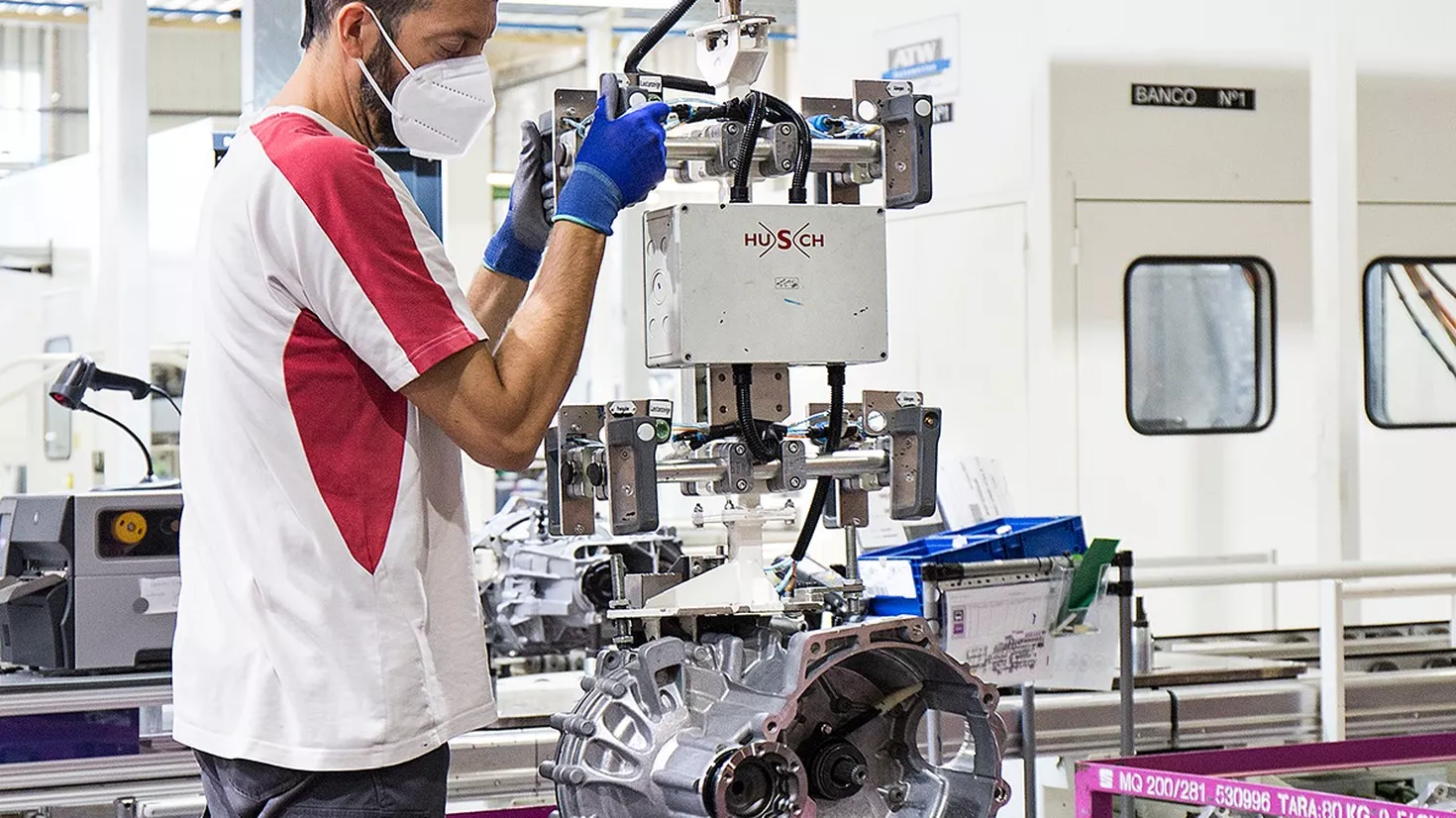
Cobots help upskill operators
Another benefit of the application is that the operators have been relieved of manually unloading 18,000 parts a day.
“By using collaborative robots, we have managed to ensure that operators can devote their time to tasks that add value to the product, such as quality issues or process improvements,” noted Gómez. He added this is why “the operators see the cobots as an extra tool to do their work.”
All in all, SEAT has changed its attitude, allowing its team members to take on future automation projects in-house.
“Now, any automation project is conditioned not only by its contribution in terms of profitability, but also because it provides us with know-how that we did not have before,” Gómez said.
To sum up, the project “is profitable, productivity is higher, and quality has been consolidated,” concluded Eduardo Fonseca. He said the automation project has gotten the approval of the SEAT group.
Editor’s note: This article was syndicated with permission from Universal Robots’ blog.
Credit: Source link


Comments are closed.